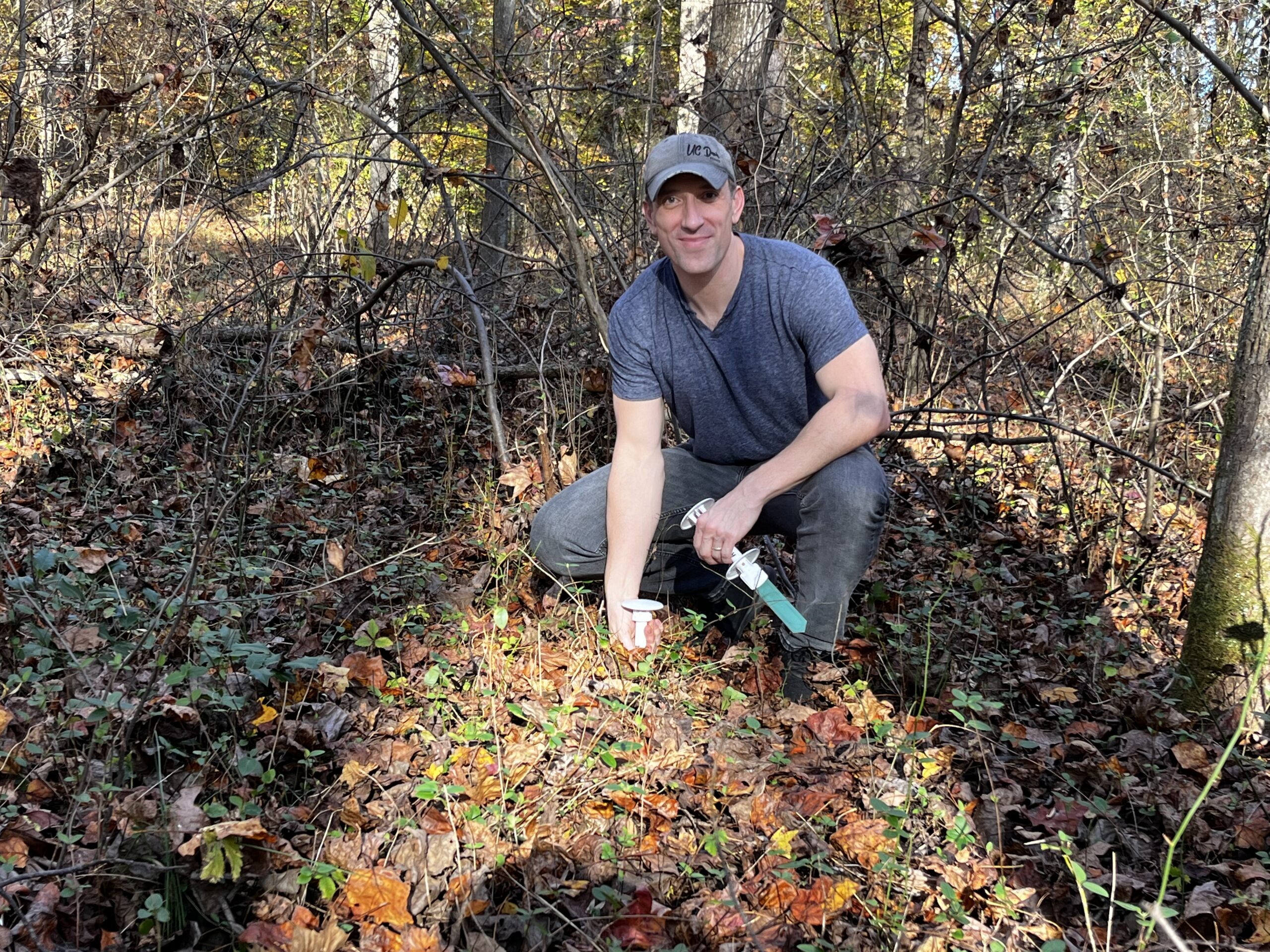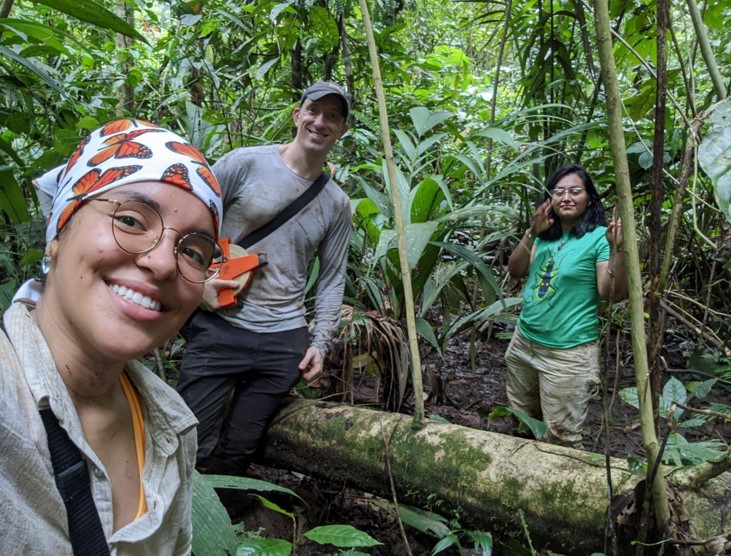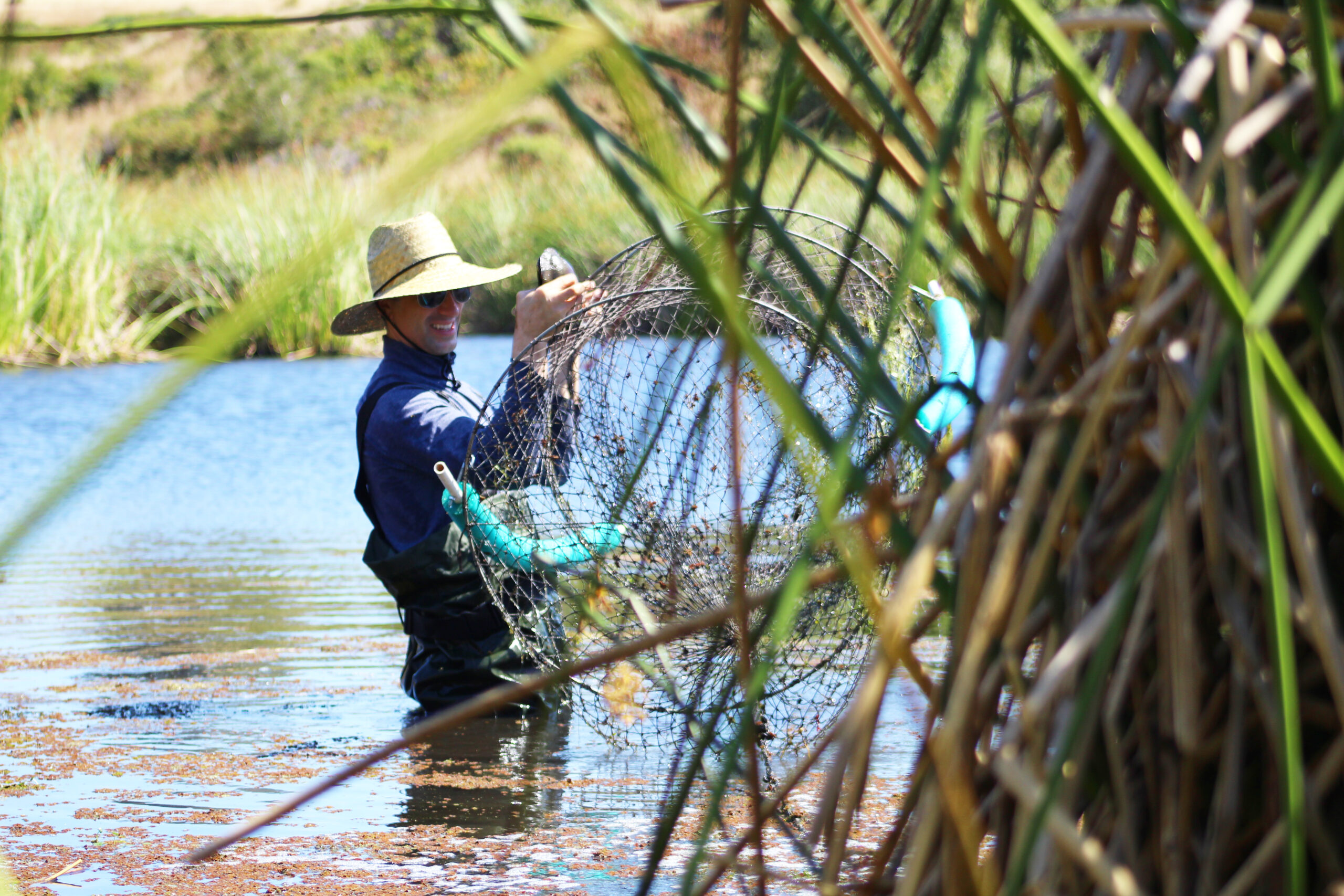by Kristen Goodhue

Justin Nowakowski’s work defies easy labels. He’s part amphibian tracker, part global change ecologist, part conservation biologist and part microclimate detector. He joined SERC as one of three new principal investigators this fall, after finishing a joint fellowship with the Smithsonian’s Working Land and Seascapes Initiative and Conservation International. In this Q&A, he dives into why thinking global requires zeroing in on the local. Edited for brevity and clarity.
Were there any moments or experiences that especially inspired you to be a scientist?
A senior thesis project that I worked on. It was a really simple project. All we were doing was trying to estimate abundances of larval stream salamanders…And we found they were far more abundant than we would have guessed, up to 100 individuals per meter squared in some of these streams. Highly abundant. But really going through that research experience, from inception to project design to data collection to analysis to communication, was for me an eye-opening experience.
Your new lab is called the Integrative Spatial Ecology Lab, which sounds pretty broad. Could you break down what that means for your work?
More and more, understanding and addressing problems of global change requires an integrative approach to research and problem solving. It’s important to bring together ideas and teams from across disciplines. Although much of my research includes elements that are traditionally in the realm of landscape ecology—things like understanding the effects of land use on animal distributions and movement—I also integrate approaches from other subdisciplines. These include trait-based approaches from evolutionary ecology, methods and concepts from thermal ecology, as well as applied approaches that rely on and build conservation evidence.
What new questions do you hope to answer with your lab at SERC?
I’m really interested in how restoration, especially forest restoration, is affecting microclimates. And then in turn, how does that influence the reassembly of native vertebrate assemblages, native vertebrate species, in those areas that are under restoration?

With so much urgency on solving global climate change, why is it important to understand local-level “microclimates”?
Because microclimates are what people and animals actually experience on the ground…Most of what we know about climate change comes from coarse datasets that are derived from weather stations. And these weather stations tend to be installed in a standardized way. So in open areas that are flat, without vegetation. And this is by design because it factors out these local variables that influence microclimates, like topography and vegetation, which we consider “noise” in these large-scale climate models. But this noise is actually highly important for understanding how animals are responding to changes in land use and climate. And people as well.
So when we think about urban heat islands, one way to really mitigate the effect of urban heat islands is to plant trees, and those trees provide cooler microclimates that reduce energy consumption.
Much of your species-level research focuses on herps—amphibians and reptiles. What drew you to these animals?
Amphibians and reptiles are really interesting study organisms. Amphibians, for example, derive from these ancient lineages that go back before the dinosaurs….And we just don’t know as much about amphibians and reptiles as we do other vertebrate taxa like birds and mammals. We’re still describing about 100 new species of amphibians every year. And some of these species disappear or we don’t see again for another 20 years and know nearly nothing about their natural history. So they’re important conservation targets and have been overlooked to a large extent.
…
Another reason I’ve focused a lot on amphibians, aside from the fact that they have fascinating natural histories, is that they are often among the most abundant vertebrates in terrestrial systems. They can reach higher abundances than birds or mammals and can represent comparable biomass. From a quantitative perspective, that makes them a really nice group to work with. And from an ecological perspective, this makes them important components of ecosystems.

Do you have any thoughts about involving citizen science or community-based science into your work?
Part of the reason I came to the Smithsonian for this [previous] fellowship initially was that I wanted to continue to connect the work that I do with on-the-ground conservation actions. And something that’s key to doing that is engaging with local stakeholders in the assessment and design process. So that’s one thing I learned quite a bit about, working with other scientists through the Working Land and Seascapes Initiative, because there’s a lot of people at the Smithsonian who are fantastic when it comes to stakeholder engagement.
…
We’re also thinking about how we might engage people in a backyard bird monitoring project, where we would have folks put out one of these microclimate sensors and watch birds that would come to their backyards and keep a list, and use that to ultimately say something about how land use and microclimate across the landscape are shaping bird assemblages through citizen science data.
Any favorite moments as a scientist?
There’s a frog [Atelopus varius] that disappeared from the mountains of Costa Rica.…At the time, it was thought that [it] had completely disappeared from Costa Rica as a result of the pathogenic fungus, Bd. When we went looking for the species, we relied on the knowledge of a local farmer, a landowner we had worked with and who was familiar with the slopes of the volcano, Cacho Negro. This volcano is part of a large wilderness area – so, no roads or trails – in the cordillera central where the species had occurred in the past. Although we searched a number of streams and saw many other amazing species, we ultimately did not find the “rana pintada” [painted frog]. Since then, the species has been rediscovered in other parts of the country, which has been the case for a number of species considered possibly extinct, as scientists have gone searching for lost amphibians.
Do you have any advice for aspiring or early-career scientists?
Seek out good mentors, and try to work on a number of different projects. Because not every project or research area is going to be a good fit, and it’s important to try a variety of things before you set yourself down a path.
Meet more SERC scientists:
Rebecca Hale: City Streams and the Future of Urban Ecology
Genevieve Noyce: Experimenting on the Wetlands of 2100
Katrina Lohan: Marine Parasite Hunter
Jonathan Lefcheck: MarineGEO Pioneer


I really enjoyed reading this article! I learnt a lot about Justin Nowakowski and his work as a global zoologist. I didn’t know that he had worked on so many different projects all over the world. I also found it interesting to learn about how he uses technology in his work, and how he is able to share his work with people all over the world. I have a few suggestions for the article. Firstly, I think it would be helpful to provide more information on some of the projects that Justin Nowakowski has worked on. Secondly, I think it would be helpful to provide more information on how he uses technology in his work. Finally, I think it would be helpful to provide more information on how he is able to share his work with people all over the world. What kind of information would you like to see included in the article about Justin Nowakowski’s work? Do you have any suggestions for how the article could be improved?